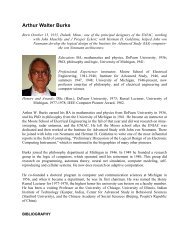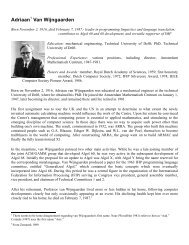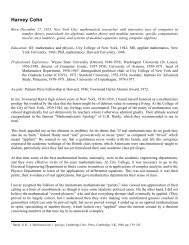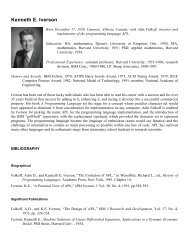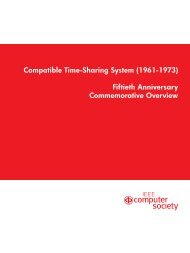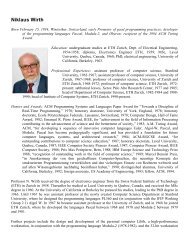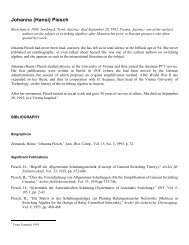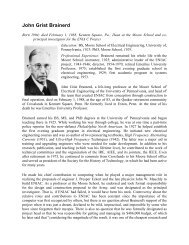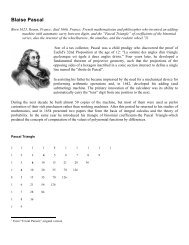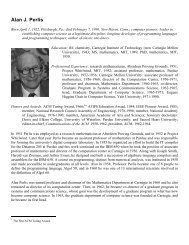L - Walden-family.com
L - Walden-family.com
L - Walden-family.com
You also want an ePaper? Increase the reach of your titles
YUMPU automatically turns print PDFs into web optimized ePapers that Google loves.
,<br />
I<br />
J<br />
Bolt Beranek and Newman<br />
Inc.<br />
The Modem-to-IMP routine (M-I) handles inputs from the<br />
modems. This routine consists of several identical routines,<br />
each devoted to a modem channel. Such duplication is useful<br />
to obtain higher speed. This routine first sets up a new input<br />
buffer, normally obtained from the free list. If a buffer<br />
cannot be obtained, the received buffer is not acknowledged<br />
and is reused immediately. The discarded packet will be<br />
retransmitted by the distant IMP. The routine processes<br />
returning acknowledgments for previously transmitted packets<br />
and either releases the packets to the free list or signals their<br />
subsequent release to the IMP--to-Modem routine. The M-I routine<br />
then places the buffer on the end of the task queue and triggers<br />
the programmable task interrupt.<br />
The TASK routine uses the header information to direct packets<br />
to their proper destination. The routine is driven by the task<br />
interrupt, which is set whenever a packet is put on the task<br />
queue. The routine routes packets from the task queue onto an<br />
output modem or Host queue determined from the routing algorithm.<br />
If the packet ls for non-local delivery, the routine determines<br />
whether sufficient store and forward buffer space is available.<br />
If not, buffers from modem lines are flushed and no subsequent<br />
acknowledgment is returned by the IMP-to-Modem routine. Normally,<br />
an acknowledgment is returned in the next outgoing packet over that<br />
modem line. Packets from Hosts which cannot get store and forward<br />
space are removed from the queue and replaced at a later time by<br />
the H-I routine.<br />
If a packet from a modem line is addressed for local delivery,<br />
its message number is checked to see whether a duplicate packet<br />
has been received. As mentioned previously, each IMP maintains<br />
a window of contiguous numbers which it will accept from a source<br />
IMP. Packets with out-of-range numbers are considered duplicate<br />
3-10 2/73<br />
1<br />
i,<br />
I<br />
.J<br />
l.<br />
.J<br />
l j<br />
']<br />
J<br />
J<br />
J<br />
J<br />
J






